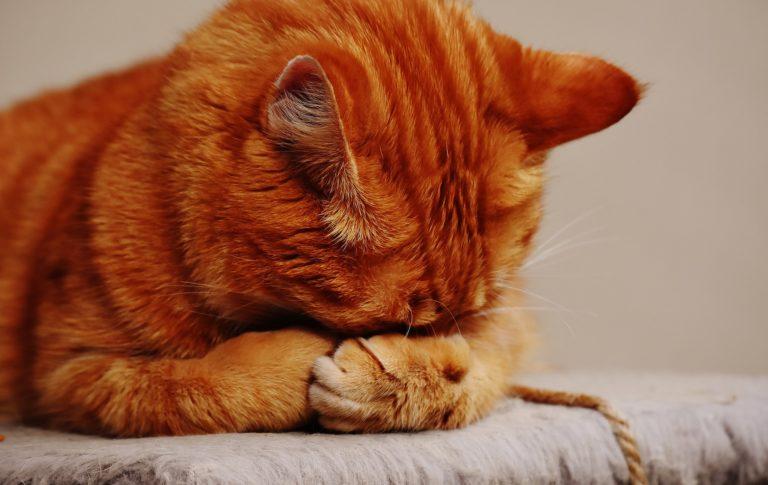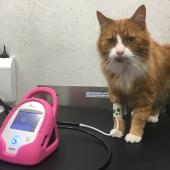Sleeping respiratory rates

Cats, known for their graceful and often mysterious behavior, exhibit various sleeping patterns and respiratory rates. Understanding the normal respiratory rates during sleep is essential for cat owners to monitor their feline companion's health and well-being. Here’s a closer look at sleeping respiratory rates in cats and what cat owners need to know.
Sleeping respiratory rates
Fluid accumulation in or near the lungs is a possible sign of heart failure in animals.Because the fluid in and around the lungs reduces the amount of oxygen your pet can breathe in with each breath, we know that an early indicator of this fluid build-up is an elevation in breathing rate. Numerous scientific investigations have demonstrated that monitoring breathing rates at home can serve as a useful early warning system for this fluid accumulation. You may determine when your pet requires medical care by looking at their breathing rates.This fact sheet explains how to keep an eye on your pet's respiratory rate and what to do if you notice something is off.
Why should I calculate my pet's breathing rate?
If you have been asked to count your pet’s breathing or respiratory rate (SRR or RRR; sleeping/resting respiratory rate) at home then it’s likely they have been diagnosed with congestive heart failure (a build-up of fluid in or around the lungs due to heart disease) or are at risk of developing congestive heart failure in the future. An increase in your pet’s breathing rate can be the first sign that fluid is accumulating and this can often be detected before they start to have more severe breathing difficulties.
How do I calculate sleeping breathing rate?
Always try and do this when your pet is asleep. You can calculate your pet’s breathing rate by counting how many breaths they take over a minute. You can also count over fifteen seconds and multiply by four. One rise and fall of the chest is one breath. You should be able to visualise the rise and fall of the chest without touching your pet but if not then you can put a hand on their chest and feel the rise and fall, as long as touching them doesn’t disturb them.
Factors Affecting Respiratory Rates
Several factors can influence a cat's sleeping respiratory rates:
-
Age: Kittens and senior cats may have slightly higher sleeping respiratory rates due to their developing or aging bodies.
-
Activity Level: Cats that are more active during the day might have slightly higher sleeping respiratory rates as they recuperate during rest.
-
Temperature: Cats tend to breathe faster when they're warm and slower when they're cool.
-
Health Conditions: Respiratory rates can be affected by various health issues, including respiratory infections, heart problems, or obesity.
How often should I do this?
The frequency with which you should count a rate depends on how severe your pet’s disease is. Your vet may give you some guidance on this but if not then counting once daily should be adequate.
When should I do this?
The best time to measure your pet's respiration rate is while they are asleep. As long as they are peaceful and at ease, it can also be measured when they are sleeping, albeit the results may vary significantly. If your pet has recently exercised, is aroused, or is panting, don't count their heart rate because they are more likely to do so during these moments.
What is the normal sleeping breathing rate?
Normal sleeping breathing rate for a dog or cat is 30 breaths/minute or less. Normal resting breathing rate may reach 40 breaths/minute. By counting your pet's sleeping breathing rate frequently you will get an idea of what is normal for them so an elevation above this, even if it doesn’t reach 30 breaths/minute, may indicate a problem. In fact, if you get used to counting the breathing rate in your pet when it is well an upwards trend in the number over a couple of days can be an early warning sign that congestive heart failure is imminent.
What should I do if it is raised?
If the rate is increased you should repeat several measurements over a few minutes (provided you pet is still sleeping) and if it remains elevated then you should contact your vet immediately.
When to Be Concerned
While it's normal for respiratory rates to fluctuate during sleep, cat owners should be concerned if they observe:
-
Persistent, rapid breathing: Breathing excessively fast, especially when awake or during rest, can indicate respiratory distress.
-
Persistent, slow breathing: Consistently slow breathing, even during wakefulness, can be a sign of heart problems or respiratory issues.
-
Coughing, wheezing, or labored breathing: These signs can indicate respiratory infections or allergies.
-
Blue or pale gums: This could indicate a lack of oxygen in the blood, requiring immediate veterinary attention.
What will my vet do if it is raised?
Your veterinarian will probably want to examine your pet if their respiration while they sleep is increased. To check if there is a build-up of fluid in or around the lungs, they could do an ultrasound or x-ray. In such a situation, your pet might need to stay in the hospital for a few days while the fluid is treated. In certain situations, less severe cases may be discharged the same day with an increase in dosage if they are already on medicine for congestive heart failure, or with oral pills to assist flush out the fluid.
In conclusion, understanding your cat's sleeping respiratory rates is a valuable tool in monitoring their health. By being attentive to changes and seeking veterinary care when needed, cat owners can ensure their feline companions lead healthy, happy lives. Regular check-ups and a keen eye for any unusual signs can contribute significantly to early detection and timely treatment of potential health issues.





